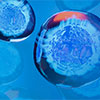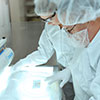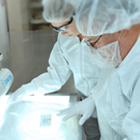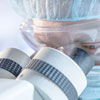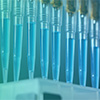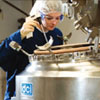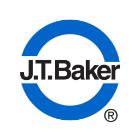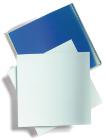TLC Plates
Supplier:
VWR Collection
Description:
These TLC glass plates are suitable for easy and quick sample applications.
Supplier:
Avantor
Description:
Baker-flex® pre-coated flexible polyester sheets have a hard, abrasion resistant coating and solvent resistant substrate for rapid, clean separations....
Supplier:
VWR Collection
Description:
Modified silica layers are, depending on the modification, suitable for polar to unpolar eluents or eluent mixtures.
Supplier:
VWR Collection
Description:
These TLC aluminium plates are suitable for easy and quick sample applications. They are flexible and can be cut to match different plate size require...
Supplier:
VWR Collection
Description:
These HPTLC glass plates have an excellent separation efficiency due to an optimised particle size distribution.
Supplier:
Avantor
Description:
Thin-layer chromatography plates (TLC), J.T.Baker®, Coating material: Silica gel
Supplier:
VWR Collection
Description:
These TLC glass plates have an excellent separation efficiency due to an optimised particle size distribution.
Supplier:
VWR Collection
Description:
These HPTLC glass plates use an optimised particle size which results in better separation efficiency.
Supplier:
Avantor
Description:
Ready-to-use in thin layer chromatography applications, Baker-flex® precoated flexible plastic sheet have a hard, abrasion-resistant coating and solve...
Supplier:
Merck
Description:
TLC plates, unmodified silica gel 60
Merck silica gel 60 has a unique polymeric binder that results in a uniform, hard surface that will n...
Supplier:
Merck
Description:
PLC (Preparative Layer Chromatography) plates are based on the same proven Merck silica-binder technology as analytical TLC plates. Plates are availab...
Supplier:
Merck
Description:
Unmodified and modified cellulose plates for the analysis of polar substances.
Supplier:
Merck
Description:
HPTLC plates, unmodified silica gel 60
This range of plates uses an optimised Merck silica gel 60 with a particle size of only 5 to 6 µm, ...
Supplier:
Merck
Description:
Our NH₂, CN- and DIOL-modified silica sorbents are less polar then conventional silica phases, making them ideal for separating hydrophilic or charged...
Supplier:
Merck
Description:
RP-2, RP-8 and RP-18 are based on silica gel 60 modified with aliphatic hydrocarbons. The chain length, in combination with the degree of modification...
Supplier:
Merck
Description:
Coupling TLC plates to mass spectrometry is a new field of high interest, which will contribute strongly to the progress of planar chromatography. The...
Inquire for Price
Stock for this item is limited, but may be available in a warehouse close to you. Please make sure that you are logged in to the site so that available stock can be displayed. If the
Stock for this item is limited, but may be available in a warehouse close to you. Please make sure that you are logged in to the site so that available stock can be displayed. If the
Additional Documentation may be needed to purchase this item. A VWR representative will contact you if needed.
Additional Documentation may be needed to purchase this item. A VWR representative will contact you if needed.
This product has been blocked by your organisation. Please contact your purchasing department for more information.
The original product is no longer available. The replacement shown is available.
Product(s) marked with this symbol are discontinued - sold till end of stock. Alternatives may be available by searching with the VWR Catalogue Number listed above. If you need further assistance, please call VWR Customer Service on 0800 22 33 44.
|
|||||||||





